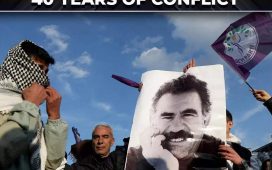
Most fatalities occurred in Kavrepalanchowk district with 34 deaths, followed by Lalitpur with 20, and Dhading with 15. Other affected areas include Kathmandu, Makwanpur, Sindhupalchowk, Dolakha, Panchthar, Bhaktapur, Dhankuta, Solukhumbu, Ramchhap, Mahottari, and Sunsari districts.
Since Thursday, Nepal has experienced relentless rainfall, leading to widespread warnings of flash floods. Bishwo Adhikari, Nepal Police Deputy Spokesperson, reported that 66 people were killed across the country, including 34 in the Kathmandu Valley. The floods have also left 60 people injured, and more than 3,000 individuals have been rescued.
Nepal Home Minister Ramesh Lekhak confirmed severe damage in the Kathmandu Valley. “The Nepal Army, Armed Police Force, and Nepal Police are conducting the search and rescue operations all across the nation,” Lekhak said.On Saturday, Kathmandu experienced unprecedented rainfall, recording 323 millimeters in 24 hours, the highest in 54 years. Heavy rains since Thursday evening, influenced by water vapor from the Bay of Bengal and a low-pressure system, triggered the disaster.
The National Disaster Risk Reduction Management Authority (NDRRMA) has warned 56 out of 77 districts of potential disasters due to the rains. Citizens have been advised to exercise caution.
The adverse weather has severely impacted transportation, with main highways blocked in 63 locations nationwide. Acting Prime Minister and Minister for Urban Development Prakash Man Singh called for an emergency meeting, which included various ministers and security agency chiefs, to accelerate search and rescue efforts.
In response to the disaster, the government has closed all schools across Nepal for three days and paused all ongoing exams. In Kathmandu, the city experienced a day-long power outage due to the floods obstructing the main transmission line, although power was restored by evening. Landslides have also blocked all entry points to Kathmandu.
Adhikari said, “Acting Prime Minister and Minister for Urban Development Prakash Man Singh held an emergency meeting with several ministers, including the Home Minister and chiefs of security agencies, to expedite search and rescue operations.”
In Kathmandu, 226 houses have been submerged, and around 3,000 security personnel from the Nepal Police are engaged in flood-affected areas.
Nepal’s monsoon season, typically from mid-June to late September, has extended this year. The country has experienced more rain than average, affecting 1.8 million people and anticipating roughly 412,000 households to be impacted by monsoon-related disasters.
Since the onset of the monsoon on June 10, Nepal has received 1,586.3 millimeters of rainfall, exceeding the usual average of 1,472 millimeters for June through September.










